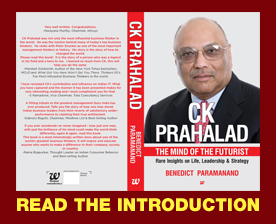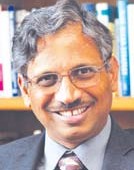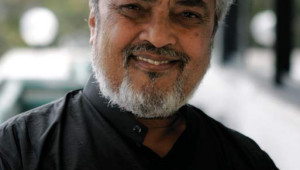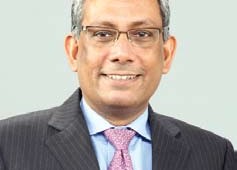 Published: July 11, 2013 in India Knowledge@Wharton
Published: July 11, 2013 in India Knowledge@Wharton
Once flying high with a growth rate of 9%, the Indian economy has experienced a marked slowdown in the past few years. While the country is still an attractive market for the rest of the world, the current sluggishness in GDP has many questioning whether India can regain its earlier luster. At this year’s Wharton India Economic Forum, speakers acknowledged the current challenges and suggested that the world would do well not to give up on the subcontinent just yet.
Montek Singh Ahluwalia, deputy chairman of the Indian government’s Planning Commission, laid out the historical context for the recent downturn. “India had a strong economic performance for several years,” he noted. While the slowdown in 2011-2012 and the subsequent deceleration are a matter of concern, they were not an isolated event: The whole world experienced a decline. “There are very serious problems everywhere. Even China has slowed down, though it’s growing faster than India,” Ahluwalia said. “[After] a long run of reasonably high growth, problems arose in the ability of the system to cope with that kind of [expansion], and there were domestic problems that needed addressing.”
Over the past several years, he added, the country has taken a more expansionary fiscal stance, “stimulated by the desire to avoid the economy being plunged into a recessionary situation” given what was happening around the world. “That certainly worked quite well initially,” Ahluwalia said, “After the first slowdown in 2008-2009, the economy recovered and it was even stronger in 2010- 2011.” But economic activity slowed down once again. Ahluwalia explained that currently, the government is seeking to stimulate growth while simultaneously winding down the stimulus and bringing the fiscal deficit under control in a phased and gradual manner.
Whether fiscal consolidation is the best approach given current conditions is a matter of debate among economists, he noted. “In the West some argue that you want to go very strongly for fiscal consolidation, while others take the view that the circumstances are not that in which fiscal consolidation is the highest priority. In our case, it’s quite clear that we have to have consolidation — but not drastic consolidation.” Ahluwalia added that over the next few years, the government was aiming for small reductions in the fiscal deficit, hoping to stimulate investment at the same time.
Balancing Progress with Prudence
Encouraging investment, Ahluwalia said, requires the removal of red tape. “Implementation constraints have held up a large number of infrastructure projects,” he pointed out. “These constraints now arise because of environmental problems, land acquisition, forest clearance…. For the first time, there is strong articulation of environmental concerns, which is legitimate on the part of civil society. But there’s always a pipeline of projects underway. It’s one thing to tighten procedures for the future, but quite another to question existing projects and essentially subject their earlier clearances to all kinds of ex-post scrutiny.”
Addressing these issues is the purview of India’s cabinet committee on investment, set up to take a “holistic” approach, Ahluwalia said. “The idea is not to ignore environmental concerns but to take a problem-solving approach where a proper balance can be struck. Part of the problem with the usual procedure is that there is too much focus on whether the process has been thorough. [Penalties should be imposed] if some things were done that weren’t quite right; we hope that the cabinet committee will take care of that.”
Ron Somers, president of the Washington, D.C.-based U.S.-India Business Council, a business advocacy organization, struck a similar note when speaking about India’s tendency to look out for the interests of its own businesses. “In the past few years, [the country] has gotten more protectionist,” he said. “It’s unfortunate to see that trend. We need to have free markets and intellectual property protection.”
Somers pointed to the restrictions that the country places on pharmaceutical companies’ patents for branded prescription drugs. “You shouldn’t have to force pharmaceutical companies [into restricting branded sales] just to encourage India’s generics industry,” he noted.
Hurdles notwithstanding, Ahluwalia has a bullish outlook on the country and asked the audience to view the current hiccups as just that: “We introduced reforms quite a long time ago. Because they were gradual and kept being gradual, they never looked very impressive,” he said. “[The economy is] growing at only 5% this year, but we view that as a shortterm blip. If you go back 10 years, the average growth rate was something of the order of 7.6%. If you remove seasonal variations to get a core underlying growth rate, you come to about 7.4%. The job of policy should be to increase it to maybe 8%-8.5%. The sum total of the micro stories is much more positive than the macro story.”
Ending the Bribe Culture
While not the worst country when it comes to corruption, India still has a long way to go, according to speakers at the forum. “We have a much lower tolerance for corruption now, which is a good thing,” Ahluwalia noted. “The government is recognizing that corruption is a problem. I’m less certain whether [corruption is] increasing or [whether it is] just the unhappiness with it that is increasing.
“There is much higher transparency,” he added, citing the Right to Information Act passed in 2005 that increased government accountability. “It’s bringing out a lot about decision making and the government is investigating cases against those charged [with wrongdoing] in the allocation of scarce resources like [telecom] spectrum and coal. Now the allocation of coal mines is done through competitive bidding; there are spectrum auctions, etc.” Ahluwalia noted that land appropriation is still a big problem area: “We’re trying to take appropriate legislative action for more transparency. These steps take time. But the government is recognizing the problem and implementing system changes.”
Arvind Kejriwal, founder of the anti-corruption Aam Aadmi political party, expressed his disapproval for the government’s coziness with big business interests and called for power to be concentrated at the local level. “The top leaders of many parties are corrupt,” he said. “In 1991, there was a move to privatize everything. In the name of privatization, practically everything was given to a few big business houses that are close to politicians. We need an honest government.
“Good governance yields good services, whether in government or in the private sector,” Kejriwal added. “Lay down rules for doing business. Honest businesses must flourish. Most policies [right now] are made to favor some big business houses.”
India is a country of entrepreneurs, said Kejriwal. “The gap between the rich and the poor has increased, and wealth is not trickling down. Every citizen has the right to do business.”
While his party’s roots were with the anti-corruption movement led by activist Anna Hazare, Kejriwal explained that he felt it necessary to enter politics to change the system, unlike Hazare’s group. If voted to power, the first priority would be to get rid of corruption, he noted. “Then we want to move from a representative democracy to a more direct democracy. At the village level, you can’t run the country from a central control. We also want the right to recall and the right to reject [elected officials].” Land reforms and ending dynastic rule are also high on the agenda, he stated.
“The primary job of government is law and order, safety and to have a justice system,” said Kejriwal. “Achievements shouldn’t be measured in the number of flyovers [overpasses] built. The best health care, the best education, etc. are important to prepare healthy, welleducated Indians. Then they will build you all the flyovers you want.”











Recent Comments